Worm casting tea...
I am just starting this worm casting tea topic on a separate thread of Khalid, Sam, and Straw's alfalpha tea and compost tea threads that I love reading over and over along with straw's data on fertilizing with mineral tests she does!
I got so excited for my aeration tea set up I started it without taking pictures!
Step 1. Gather tools/tea ingredients:
- 5 gal bucket (cute children's hospital donation design one from ace hardware)
- air pump (elemental O2 951 commercial air pump got on eBay for $30- chose this one if I wanted to split the air and do two 5 gal batches at once or one 32 gal trash can full)

- heavy harvest small compost tea bag ($16 eBay)

- 3/8 inch clear tubing (Amazon $6.89/10ft and a plastic 3/8 inch x 1/4 inch MIP barb (lowes plumbing section a couple $'s). The barb is for this fancy tea aerator I had to get...
- teaLab bubblesnake 5gal (Amazon $28+$6s&h) this video is what sold me and I splurged... Oh well I figure I am going to use it a lot and I can add a plastic coupler and pvc pipe from lowes to elongate it for use in the trash can. They sell a large on for the trash can but I refuse to fork out more money since they are overpriced for what they are. Great design and idea though...

- tea ingredients: (my compost is not ready yet so I went to my garage to look at all the ferts I had and could concoct something to try!) I used 1 cup alfalpha meal, 3 cups unco worm castings, 1 cup down to earth rose and flower mix 4-8-4. The DTE rose and flower mix has per their website:
"TOTAL NITROGEN (N) 4.0%
0.6% Water Soluble Nitrogen
3.4% Water Insoluble Nitrogen
AVAILABLE PHOSPHATE (P2O5) 8.0%
SOLUBLE POTASH (K2O) 4.0%
MAGNESIUM (Mg) 2.0%
Derived from:
Fish Bone Meal, Blood Meal, Langbeinite, Alfalfa Meal, Seabird Guano, Rock Phosphate, and Kelp Meal
ALSO CONTAINS NON-PLANT FOOD INGREDIENT(S):
4% Humic Acids derived from Leonardite"
http://downtoearthfertilizer.com/products/blended_fertilizer/rose-flower-mix-4-8-4/

Step 2. Aerated my tap water for an hour to disperse the chlorine.
Comments (45)
filly_z8bFL
Original Author7 years agoStep 3. Brewing tea.
Per Sam- aerate for 24-48hrs. The bubbles smell like shellfish water. Not bad but not appetizing lol. I hope the stray cats don't get any ideas!
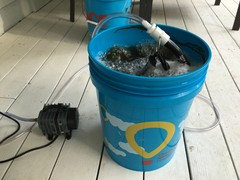

Notes: so to better show what I had to buy at lowes- the plastic barb where the clear tube connects to the bubblesnake had a 1/4" piece from the manufacturer. So I purchased a 3/8" one from lowes.

Also, the air pump came with a reinforced 1/4" ID tube to fit the pump outlet, luckily it fit perfectly in the end of the clear tube!

Questions-
1. I was planning on using this for a soil drench, should I dilute? If so what ratio do you suggest?
2. I have seen others use blackstrap molasses to feed microbes, however I decided to not use any because I used bagged worm castings... I plan on using it with my homemade compost when it's ready to brew. Should I have used it with my bagged stuff? I didn't think there were too many in that stuff so I thought it would be a waste. Here is the brand I used:

Had to buy some for my gardenias as an emergency to apply to soil to get rid of whitefly. Applied another dose of sulphur (2nd dose this year; first was in spring) to deter them and I haven't seen them since. I learned on the hibiscus forum that whitefly hate worm castings bc it puts a bad taste in the leaves.filly_z8bFL
Original Author7 years agoThe Before Tea on my Roses.
For some reason I am not too happy with the foliage on them this summer. They are all pretty new plants though so I am not pro like everyone else here! I swear I'm going to get a soil test the end of this winter so I can be ready next spring! I suspect my sandy loam/ sandy ammended with peat moss, compost, whole grain Bobs Red Mill corn meal, and alfalpha meal soil is alkaline since my hydrangea turned pink this year. Plus, my garden is mulched with red lava rocks, with compost and oak leaves top dressing around the roses.
James Galway-24hrs of rain leached mg(I think) from my sandy soil.


Carding Mill-
was kinda puny from RU, with very tiny/light colored leaves... but I have high hopes for this one. It has only put out one new branch of growth since I've had it, so I suspect it's working on its roots (I hope!) And it's probably my fault for planting in the summer time... I tried applying iron, gypsum, alfalpha tea, fish fert... Leaves still look bad to me.

Lichfield Angel-One of my healthiest even with a few ugly leaves. Has some buds forming and new growth is healthy.

Evelyn-Also from RU, came as two stems so I'm glad it's already putting new growth that's healthy. Old leaves at the top show possibly iron deficiency? I gave foliar iron but it didn't green up. I also applied some epsoma garden lime derived from dolomite lime (couldn't find any purely dolomite lime from lowes).

Heritage-blackspots a little since its in partial shade with bad circulation (near brick house). Still blooms and isn't so bad. New leaves are showing deficiency but I'm not sure what it needs.

Related Discussions
Worm castings...tea or top dress?
Q
Comments (2)28 pounds of Worm Castings spread as "top dressing" will not go very far and a tea will be most effective if you have an active Soil Food Web which then makes the tea less needed. While there has been found to be some N benefit spreading Corn Gluten Meal the expense does not make it a good soil food versus Alfalfa or ground corn. What is your soil like? How much organic matter is in that soil? What kind of life is in that soil? How well does that soil drain? What does that soil smell like? What is the pH of that soil? Any soil that appears to be compacted, or is compacted, lacks adequate levels of organic matter....See MoreCompost tea w/o the compost?
Q
Comments (0)I was wondering - I use worm castings to make worm casting tea. The most important part to me is the beneficial bacteria, which helps fruit trees absorb nutrients & fights off diseases. For someone w/o worm castings, can they use apple cider vinegar w/ the mother to achieve bacterial colonies that would benefit fruit trees?...See MoreWANTED: worm castings, worm tea and live worms
Q
Comments (0)If anyone wants some worm castings, worm tea and live worm for fertilizers and breeding, please email me rodliz12002@yahoo.com...See MoreA few questions about TEA
Q
Comments (7)LOL!! One can find arguments online to support ANY theory but whether they are accurate or based on any scientific methodology is another matter altogether. Proponents of compost teas claim all sorts of nearly magical properties to the stuff but none have been scientifically proven. Again, plant scientists based at land grant universities (those that sponsor extension services) have concluded that compost teas do not provide any extraordinary plant growth enhancers other than a mild nutrient boost. Myth of Compost Tea "Aerobically brewed compost tea suppresses disease and is an effective alternative to traditional pesticides" The Bottom Line: - Properly composted organic material makes a wonderful mulch. - Non-aerated compost teas may be useful in suppressing some pathogens on some plants. - Aerated compost teas have no scientifically documented effect as pathogen suppressors. - Overuse and runoff of compost teas could conceivably contribute to water pollution. - Aerated compost tea (ACT) use for disease control continues to lack scientific credentials. - There is no documented science supporting the use of ACT on turf and landscape materials. - ACT is not registered as a pesticide and cannot legally be recommended or applied as one. - “It is very difficult to do a microbial pesticide risk assessment on a mixture of unidentified microorganisms that could easily contain human and nontarget organism pathogens - Aerated compost teas that have been “enhanced” with molasses, kelp, and other high-nutrient additives have been documented through scientific research to contain E. coli and Salmonella populations, both of which are human pathogens. - There is a rapidly growing, compost tea industry that continues to downplay the lack of reputable science behind the product....See Morefilly_z8bFL
Original Author7 years agoThe Before Roses Continued...)
Alnwick rose-band from heirloom. Put out new tiny little basals and looks ok despite holes from a bunch of rain. I fertilize very diluted on this baby. Could probably use some nitrogen maybe?

Molineux-moved this from a different spot and hasn't quite recover yet. Not sure what to do. I've been fertilizing lightly with fish fert. Added some pumpkin pie spice too (thanks straw!) bc I thought it needed mg... Also gave some garden lime... not sure what else to do besides give time. It's putting out new leaves though.


Teasing Georgia-
right next to one of my gardenias so the white fly got to it a little before I did the treatment. Other than that it's been really healthy putting out laterals everywhere with buds and blooms. Are the leaves supposed to be slightly lighter on new growth? Excuse holes from rain/whitefly.


Ingenious Mr. Fairchild-heathy and thorny. Likes to push out tall skinny canes but this year has finally bloomed without all the canes flopping (a few have bloomed upright surprisingly) gets the least water besides rain. Some new growth is a little light. Has clover growing right next to it with 10hrs of sun so I think that's why it is so low maintenance.
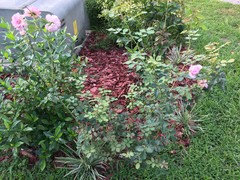
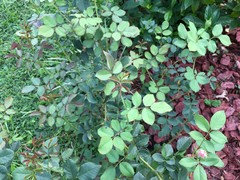
Crocus rose-
moved to my backyard W side of house and has now shown BS. (None on the E side of house before) and looks like blind shoots. No blooms here either. I have no clue where I'm going to put this rose, but I know I need to move it. I don't think it's getting enough sun.


filly_z8bFL
Original Author7 years agoLast before pics-
Eden Rose-
leaves look bad since I sprayed with foliar citrus fert ( I diluted a lot and it had a copper, iron and zinc so I was experimenting) won't do that again, bc it was really healthy and glossy before. This and JG are heavy feeders!!! Only 2 yrs old and climbing to 10 ft. I plan to plant another under the middle center of the window.



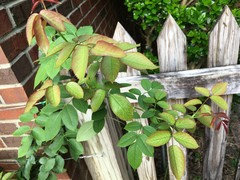
filly_z8bFL
Original Author7 years agoThanks Straw, I will definitely do the alfalfa pellets and gypsum. Thank you for your insights!
I need to take pics of the roses after the tea, it's only been a day and I can tell they have all responded positively to the tea mixture I did! All the leaves are looking better! Will post pics after the leaves dry from dew!
strawchicago z5
7 years agolast modified: 7 years agoHi filly: Your foliage is perfect looking, no mildew nor blackspots .. the red-lava rock does look good with your beautiful red-brick house. Own-roots are like babies, they need "baby food" aka "soluble nutrients". When they get bigger, their roots will produce more acid to utilize alkaline minerals like red-lava-rock.
For my 3rd to 4th year own-root, I put about 6 pieces of red-lava-rock, plus some "sour & decaying" organics on top to break down the rock. I'm testing grass clippings mulch on my pots now. Love to see your pics. !!
filly_z8bFL thanked strawchicago z5ValRose PNW Wa 8a
7 years agoHi Filly, I agree with Straw that you foliage looks healthy.
In Florida, summer can be a hard time for roses, depending on the variety. Especially in late summer, the foliage may shrink in size and show signs of deficiencies that go away with cooler temps. Lots of people in North Florida prune roses twice a year, in mid February and again in mid August. The August pruning is to remove weak foliage and to encourage growth.
You may want to check your pH . Pink in hydrangea means that your soil is less acidic then if your hydrangeas where blue but not that you necessarily have alkaline soil.
I planted some roses for rose from RU this summer and mine are just "sitting there". I won't worry, as long it they are not losing leaves. I got my from the RU sale and I think maybe the temps during shipping got a little to high.
I think that the biggest challenge to growing roses in Fl. is incorporating and maintained organics in the soil.
filly_z8bFL thanked ValRose PNW Wa 8afilly_z8bFL
Original Author7 years ago2 Days After Tea:
i will post before and after photos for better comparison.
James Galway-(before)


(After)


Carding Mill-(before)

(After)
Lichfield Angel-(before)

(After)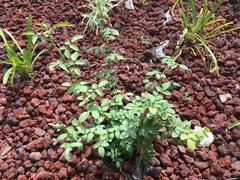
User
7 years agolast modified: 7 years agoWow
It looks like to me that they enjoyed their fertilizer tea drench.
Thanks for your support of the tea.
Today I sprayed Actively aerated compost tea. Next week I am adding the fermented plant and juice to the sprayer. You are welcome to check out and post in the rose compost /compost tea/ fermented plant Juice thread too. It would be neat to see a picture of your aeration bucket there too. I hope that we can start a trend.
Looks great. I love your aerated tea bucket set up and strainer tea bag.
filly_z8bFL
Original Author7 years agoTeasing Georgia-
(before)
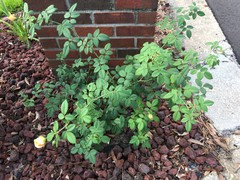
(After)
Crocus rose-(before)

(After)so I got really mad at all the blind shoots and disease 2 days ago... so I pruned way back to help it reset itself. Biggest thing I noticed is the buds have already begun to swell!

Eden-(before)


(After)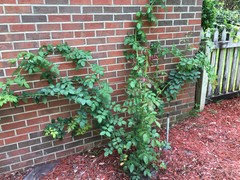

Overall the difference didn't really show in the photos but up close I noticed the leaves looked glossier and less wrinkled on all the plants. Some were darker green. I did notice a lot of new growth on the laterals too!filly_z8bFL
Original Author7 years agoThanks Sam! I did see you were fermenting kudzu on the other thred I'm interested to see your results. Why do you add sugar? To feed microbes? Does that help ferment? Cuz of yeast? Sorry for all the questions just trying to learn lol.
I am am trying to make fermented alfalfa tea. Should I do a soil drench or spray on leaves?
i also purchased those spirulina tablets straw recommended so I'm excited to try that too in a couple weeks!strawchicago z5
7 years agolast modified: 7 years agoHi Filly: thank you for posting the before and after pics. Yes, I also noticed darker green when I watered with "acidic & fermented alfalfa tea".
Blind shoots is a sign of boron/potassium deficiency, red-lava-rock has plenty of both, but it needs an acid to break down in a solution. That's why I stop mulching with red-lava-rock, and throw them into my rain-barrels (pH of rain is 5.6 compared to pH of tap-water over 8). After a few days, the water in my rain-barrel turns reddish .. but spirulina turned the water purplish faster. Spirulina has the most trace-elements.
A nursery once advise pouring a can of soda (has sugar) into the soil to make it acidic. Sugar feeds the yeast (fungi) that live inside the soil. There are 2 mycorrhyzal fungi (endo and ecto) both prefer slightly acidic, and both help roots to uptake nutrients. Thus watering roots with sugarly stuff like molasses make the soil more acidic.
As to spray leaves with sugary stuff, I don't think its a good idea, since flies are attracted to sugar. Old donuts attract more flies that meat in a study. Rose Midge is in the fly/gnat family. Same with throwing bananas around the bush, that attract sawflies, which give birth to rose slugs.
Spraying stinky stuff like fermented alfalfa tea will attract pests, be it sawflies that give birth rose-slugs, or rose midge (a type of fly/gnat). The neighbor's dog came to my backyard yesterday since the fermented grass-clippings stank.
The spirulina tablets are powerful: I put 10 tablets per 32-gallon of trash-bin (filled with rain-water) .. and the water became purplish. I was a bit scared at first, but tested it anyway, and the leaves got so large and healthy. Msdorkgirl from Hawaii testified that one of the fertilizer she used (with kelp) made the leaves so large, same with Kitty Belandez (famous rosarian in CA). Spirulina is better than kelp .. much less salt.
MULCHING WITH GRASS CLIPPINGS was a BIG DISASTER in hot & dry weather. That was too hot for roses !! I should had known better, when I got big bags of FRESH & free grass-clippings from neighbors, I used my bare hands to sprinkle around roses, and that grass-clippings gave so much heat that it burnt my hands !! I had to put gloves on immediately.
It surely burnt my roses, they dropped their lowest leaves just from the heat radiated from rapid-decomposition of greens. Few summer ago I killed an expensive fragrant peony, since I put alfalfa meal in the planting hole. That gave off heat with fast-decomposition and cooked the peony root to death.
Hot sun & dry weather speed up the decomposition, and small particle greens like alfalfa meal & grass clippings give off tremendous heat. However, alfalfa hay doesn't burn roots since it's VERY SLOW in decomposing and doesn't give off heat in hot sun.
I have a bale of alfalfa-hay sitting on my patio, and it's always cool, even in 90 degree heat. I have excellent result mulching with alfalfa hay for many years, alfalfa hay doesn't get stinky like grass-clippings.
Tomatoes like heat, they like grass-clippings, but roses prefer cooler roots.
filly_z8bFL
Original Author7 years agoThanks for that info straw! I'm brewing some fermented alfalfa right now in a 5 gal bucket. I didn't aerate it, and I'm going to add 1 tbs of backstrap molasses and 3 of the spirulina tablets before I water it in. I used only rain water in this tea that I collected over the past few days. I am looking into a rain barrel but I'm not sure if the hubby will let me get one. We water from a lake behind the house so we have free water already. But I like the idea of a 50 gal barrel collection for my tea mixes and watering with rainwater instead of city water.
User
7 years agolast modified: 7 years agoThis is my first time making the fermented plant juice. (FPJ)
The mixing of dry sugar with the wild cucumber vines and leaves brings out the plant juice by osmosis pressure. It also gives the microbes food in the fermenting. Next week I will mix it (FPJ). 1 to 500 with the leftover Actively aerated compost tea in a few days. Then I will spray the leaves with the(FPJ) after a few days with FPJ the AACT early in the morning.
strawchicago z5
7 years agolast modified: 7 years agoAlfalfa is fantastic in promoting growth, but it gets sour too fast & stinky as in "tea" in hot weather, so I switched over to chopped fresh mint, and calendula (many anti-inflammatory medicinal nutrients). I like Calendula result the most. I'm out of sulfate of potash, so I threw some red-lava-rock in with my "sour" greens.
For more info. about Calendula, see below:
http://forums.gardenweb.com/discussions/4001244/burning-heat-and-monsoon-zone-9b-islamabad?n=146
Pictures below were taken August 7, showing the result of watering with slightly sour greens (mint leaves and calendula), plus some dissolved red-lava. Below is Pat Austin, in less than 5 hours of sun:
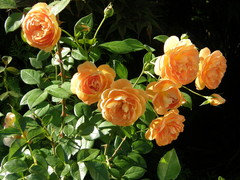
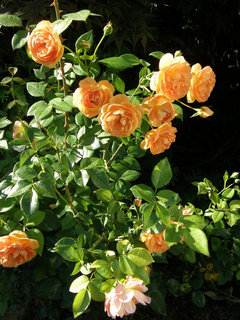
Stephen Big Purple, full-sun, taken August 7 at 85 degree. I mixed cracked corn with clay and topped it to get the "ruffle-effect" on blooms:

Lots of blooms on Pink Peace 3rd flush. Fertilized with mint & calendula tea and red-lava. August 7 pic.

Below is Tchaikosky in less than 4 hours of sun. Also watered with "sour green" & red-lava water .. ran out of sulfate of potash:

Strike it Rich, bought from Roses Unlimited 3rd week of June. first 2 blooms have lousy scent, 3rd bloom has fantastic fruity scent.
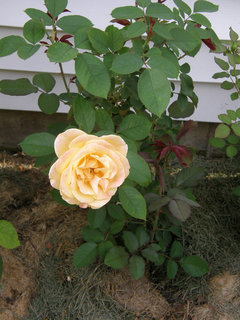
Below Sun-Downer is a blackspot-fest, finally get some scent on its 2nd flush. Bought as a $7 cheap bare-root, wrapped in plastic from Menards in June .. Perhaps the bare-stick-Dr. Huey isn't mature enough to handle rock-hard clay.

Below is my 2nd Dee-lish, bought 3rd week of June from Roses Unlimited. Buds start forming, too little sun (less than 3 hours):

Below is Bohemian Rhapsody, bought 3rd week in June from Roses Unlimited. Too little sun, so it's spindly, the yellowish leaves are old leaves from the nursery. will plant in fun-sun ASAP so prevent the spindly growth.
All pics. were taken August 7, in hot & dry weather above 85 degree.
ValRose PNW Wa 8a
7 years agoWe take care of the landscape of a large property on a lake in Melrose Fl. The irrigation system uses lake water. We don't fertilize and the established plantings don't need it. The rose bushes are about 10 years old and they all look very good. You may want to check with Straw and Sam to see what think of using lake water to make your teas. I know the pH of the lakes around where I live are usually acidic.
filly_z8bFL thanked ValRose PNW Wa 8afilly_z8bFL
Original Author7 years agoThat's a great idea Valrose! I'm not sure about mine. I want to get it tested along with my tap and the rain water too to be sure.
Straw, I agree alfalfa stinks. Day one it smells grassy and It didn't really start smelling bad until yesterday. I plan on using it tomorrow morning mixed with some more water bc it smells bad! I can't decide which rose I like best of your photos! They all look great! The sun downer must be really bad if it's BSing for you because the leaves look really healthy otherwise! Your roses are so big despite being planted in late June! I like your pink peace picture with the bloom facing up!strawchicago z5
7 years agolast modified: 7 years agoFilly: If you have a few leaves of red-cabbage and a blender, it's a quick test. Put 3/4 cup of lake water & 1/2 leaf cabbage, pureed in a blender. Let it settle in a small cup. Do the same with 3/4 cup rain water & 1/2 small leaf red-cabbage, pureed in a blender. Let it settle in a small cup. Then do the same with 3/4 cup tap water, and compare the colors of the solutions.
pH of rain is 5.6 .. if the lake water is acidic, it would be reddish-violet like rain-water. The tap water is alkaline, and it should be bluish-purple. Most tap water has pH over 8. My tap water at pH 9 turned red-cabbage juice into bluish/purple.
I used acidic rain water (pH 5.6) plus alfalfa pellets (pH 5.8) ... after a few days, it became too sour and wilted a few roses in the heat. After that I always put red-lava-rock (pH 8.2) to neutralize the acidity, plus releasing potassium and boron for more blooms.
Red-lava-rock is high in potassium .. but too low in magnesium and manganese. Thank you for the pic. of James Galway and classic magnesium deficiency of lower leaves (arrow-head dark-green center, with pale sides).
Both alfalfa meal and cracked-corn have decent magnesium. NPK of alfalfa meal is 2.7 / 1 / 2.
NPK of corn meal is 1.6 / 0.65 / 0.4 .... that's more nitrogen than horse manure NPK 0.44 / 0.17 / 0.35. Whole-grain corn's minerals profile: 53% magnesium, 25% iron, 35% phosphorus, 14% potassium, 40% manganese, plus anti-fungal agents of 37% selenium, 24% copper, and 26% zinc.
Cracked corn at pH 4 is best under red-lava-mulch to neutralize the alkalinity given off by red-lava. Plus cracked corn in contact with soil will get moldy to provide mycorrhyzal fungi which help roots in nutrient-uptake.
One year I made "tea" out of cracked corn, it was messy & stinky and too acidic. Cracked-corn is cheaper than alfalfa. I can get a HUGE 40 lbs. bag of dry cracked corn for $10 at local feedstore, compared to $19 for Standlee alfalfa pellets.
Re-post nutrients in red-lava, high in potassium & boron & iron:
Nitrate Nitrogen.................................4.0 p.p.m.
Phosphorus........................................6.0 p.p.m.
Potassium.........................................59.0 p.p.m.
Zinc.........................................................6 p.p.m.
Iron..................................................10.0+ p.p.m.
Copper...............................................5.5+ p.p.m.
Magnesium.......................................2.0+ p.p.m.
Boron.................................................10.0 p.p.m.
Sulfate.................................................7.0 p.p.m.
Organic Material...........................................5%
PH.........................................................8.2 Units
Calcium..................................1.3 Meq/100 gm*
Manganese...........................0.6 Meq/100 gm*
Sodium...................................0.1 Meq/100 gm*
Cation Exchange Capacity..3.2 Meq/100 gm*Here is a link that might be useful: Nutrients composition of lava rock
filly_z8bFL thanked strawchicago z5strawchicago z5
7 years agolast modified: 7 years agoFilly: I look through your roses a 3rd time. Agree with you that clover does a fantastic job of fixing nitrogen for your Ingenious Fairchild rose (very healthy).
Heritage is known to prefer acidic & loamy soil. For Heritage, once the pH is lowered, the upper pale leaves (sulfur deficiency) will go away.
I see nitrogen-deficiency in your Carding Mill and Evelyn (lowest leaves are pale).
Nitrogen Deficiency Caused by:
- High levels of Phosphorus or Potassium & Waterlogged soil & Yellowing of the leaves, that starts from its tip. Older leaves are affected first
- Thin young shoots & Stunted growth & Small sized leaves & Short internodes.Garden lime has pH 9, and red-lava-rock has pH 8.2 ... both are too alkaline. When the pH is too high, boron & zinc & iron and manganese are less available. Boron and zinc are vital for blooming, and iron & manganese are for dark-green leaves.
I also see iron deficiency in your Evelyn. Applying garden lime (high pH & high calcium) zaps out iron and zinc. Four teaspoons blood meal with iron NPK 12-0-0, plus 1 teaspoon sulfate of potash NPK 0-0-50 will restore the balance of 4 part nitrogen & 2 part potassium & 1 part calcium for sandy soil.
Worm-casting has plenty of calcium, same with alfalfa meal (has both calcium & magnesium).
I see zinc deficiency, rather than manganese deficiency in Molineux. Too much phosphorus zaps out zinc and iron. Too much calcium (high pH garden lime) also zaps out zinc and iron.
http://www.plantsdb.gr/en/general-cultivation/fertilizing/457-nutrient-deficiencies-and-toxicity
Zinc Deficiency Causes by High pH or High Phosphorus or Copper levels.
Soil low in organic matter.- Yellow spots or diffuse chlorosis between leaf veins.
- Small leaves with irregular shape & Necrosis and defoliation.
- Short internodes & Poor flower and seed production.I have 2 Austin roses in pots: William Morris and St. Cecilia. Both refused to grow until I topped with 4 part alfalfa pellets and 1 part gypsum. Nitrogen deficiency occurs in sandy soil or fast-draining potting soil. My William Morris has serious zinc deficiency, zero blooms (bought 3rd week of June).
I have my Carding Mill under a rain-spout and it's stunt in growth (from nitrogen leaching out) .. will move that UP hill to a spot pre-made with cracked-corn and alfalfa pellets in planting hole.
The below site on worm casting stated that it has decent calcium, but low NPK 1-0.5-0. Blood meal NPK 12-0-0 is too stinky for compost-tea, but it worked great sprinkled around roses. I'm out of blood-meal, will have to buy some from Walmart. For large foliage and vigorous growth, nitrogen is a must. Blood meal has iron, so it's fantastic in fast growth and green-up.
Blood meal needs organic matter & soil microbes to activate. I always mix blood-meal with soil, or grass clippings. Blood meal alone takes longer to work.
http://wormmainea.blogspot.com/2012/12/n-p-k-value-of-vermicompost.html
" When I've had my vermicompost tested the results have sometime come back high (once as 2-1-1), but more commonly much lower (1-0.5-0 or 0.5-0-0) typically with high calcium." Mark.
http://wormmainea.blogspot.com/2012/12/n-p-k-value-of-vermicompost.html
filly_z8bFL thanked strawchicago z5filly_z8bFL
Original Author7 years agoThank you so much straw for that info. A lot of my def. I think are also from a lot of rain we've been having lately leaching out the nutrients in my sandy soil! I don't have any red cabbage but I will have to post pics when I get around to trying the water test and adding those amendments you recommended!
strawchicago z5
7 years agoVeteran Honor, bought 3rd week of June from RU, pic. taken August 7. Leaves got larger after spirulina. Round holes are leaf-cutter bees damage.

Double-Delight, bought early June as grafted on Dr. Huey. Dark-green foliage: tons of cracked corn in planting hole for manganese & iron. Pic. taken August 7.
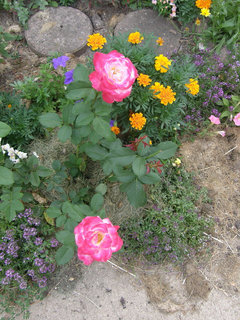
Louise Este as own-root can't secrete acid. Note manganese deficiency on most leaves. It gets plenty of molasses with 20% iron. My next step is to take the grass clippings out, and put cracked corn under a layer of alfalfa pellets. Tiny bud is formed, but it's way-behind the other 9 bought 3rd-week of June.
 filly_z8bFL thanked strawchicago z5
filly_z8bFL thanked strawchicago z5strawchicago z5
7 years agolast modified: 7 years agoYesterday I did a test: For 12 roses in pots (including the 3 Yves seedlings), I watered with alkaline tap-water soaked for 24 hours with 6 cups alfalfa pellets per 30 gallons tap-water (pH near 9). I also put red-lava-rock to balance the acid. Alfalfa pellets is alfalfa meal pressed into pellets.
This morning I went to inspect. FOR THE 5th TIME THIS SUMMER, watering with alfalfa tea resulted in thinner leaves, more blackspots, plus leaves curl down (due to potassium drop as pH drops), plus there's white mold growing on the alfalfa solids remnants.
Early summer I tested 4 cups of alfalfa pellets soaked in 32 gallon RAIN-WATER. The first time was OK (soaked for 24 hours): roses in heavy clay greened up a bit .
Early summer: 2nd, 3rd, and 4th time with alfalfa in rain-water were BAD, I soaked for 2 to 3 days, and the water got too sour: wilted roses in the heat, leaves got thinner and broke out in blackspots.
This 5th time with alfalfa in alkaline tap-water, soaked for 24 hours, is most disappointing. My Austin rose in pot: St. Cecilia still has manganese deficiency, and leaves got thinner & curl under (from the acid in alfalfa-tea). Leaves curl under is a sign of potassium and copper dropping low. Copper is a strong anti-fungal agent, less copper means more blackspots. See below chart:
https://www.hydroponics.net/learn/nutrient_deficiencies.php
My 3 Yves seedlings in pots hate that alfalfa-tea, broke out in blackspots. Yves seedlings are children of Yves Piaget, a French Meilland roses .. these don't like acid. What's worse, there're disgusting white mold growing on the alfalfa solids on all my pots.
strawchicago z5
7 years agolast modified: 7 years agoFor roses on west side of the house, including tiny own-root Madame I. Pereire (MIP), Souv. du President Lincoln, plus 2 own-roots bought from RU in 3rd week of June .... these get 4 gallons of chopped mint & calendula leaves per 30 gallons of rain-water (pH 5.6), also soaked for 24 hours. The result is very good.
This is the 6th time I tested chopped mint soaked in rain-water, plus some red-lava-rock to balance the acid released. No mold grown on the chopped mint, left on top for days.
Copper is the strongest anti-fungal agent, next is zinc. Basil is highest in copper at 3 mg, mint is next at 1 mg. That's more copper than 1/4 cup of sesame seed (1.47 mg of copper). And way-more copper than 0.05 mg fraction in Bloom-booster fertilizer. Copper is essential to prevent fungal diseases & promote firm petals. When copper drops, leaves wilt or curl-under.
Below pic. is band-size Madame I. Pereire (MIP), almost died during wet winter. When I moved to the hill early June: the root was band-size, stems died to the crown. This got the most mint-tea .. mint has salicylic acid (a rooting hormone) so I balance that with red-lava-rock to make it neutral pH. I gave it a tiny amount of blood-meal early June, and topped with alfafa pellets back then.
I also topped with alkaline clay to neutralize the acidic alfalfa. The growth is fast & zero blackspots. MIP has a blackspot-reputation. It's a once-blooming spring, and sparse repeat.

Below is Neil Diamond, received from RU 3rd week of June, planted in alkaline clay. Leaves become glossy with the mint & red-lava tea. Two fat buds on top. Much healthier than the others in pots. Both pics. taken today, August 10.
For nutritional-data in mint, see below link. On lowest right margin of the link, it listed 24% calcium, 36% copper, 63% iron, 51% manganese, and 10% zinc: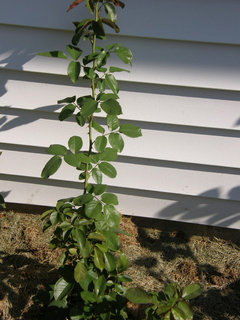
http://www.nutrition-and-you.com/peppermint.html
Since I'm out of rain-water, today I made another batch of tap-water with basil (for zinc), and garlic chives (stinky). Below link shows nutritional data of garlic chives (known to repel pests):
http://www.nutrition-and-you.com/chives.html
Below link shows nutritional data of basil, with 43% copper and 57% manganese, but I don't have much basil .. will plant more next year:
http://www.nutrition-and-you.com/basil-herb.html
Last year I got a huge bush of oregano, didn't know what to do. now I do, check out the super-high copper at 105%, plus 550% iron, 203% manganese, and 40% zinc, and 35% potassium. Plus 39% of anti-fungal vitamin niacin.
Oregano has strong anti-fungal and antioxidant properties. Will shop for oregano plant today. it's more vigorous than basil.
filly_z8bFL
Original Author7 years agoWow I didn't know there's common herbs have so many different elements packed into them! Been on vacay for a few days so I came home and immediately watered my roses. Will be fert. tomorrow!
strawchicago z5
7 years agolast modified: 7 years agoUpdate: We are in a hot spell over 85 F, no rain for over a week as of today, Sept. 20, I'm NOT making mint & lemon balm nor basil tea, but fix my tap-water at pH 9 with sulfate of potash/gypsum. HEALTH IS NOT GOOD like previous pics. with mint-tea, tap water is still too alkaline: leaves pale & curl up, wilting at the top-shoot due to copper less available at high pH.
As of Sept. 20, most healthy OWN-ROOT roses in pots are: Veteran's Honor and Jude the Obscure, which I put acidic gypsum & alfalfa pellets on top to neutralize alkaline tap water. Also zero blackspot Austin St. Cecilia, which I put acidic mint leaves & the entire $1 bottle of oregano herb in August (high copper at 105%, plus 550% iron, 203% manganese, and 40% zinc, and 35% potassium. Plus 39% of anti-fungal vitamin niacin).
From previous research, I found that copper has to be chelated to organic matter (as in herbs) to be available. But zinc is more available to plants as a metal. Thus zinc pennies (after 1980) can be used for zinc-deficient soil, but copper pennies (before 1980) might not be available for plants.
The 2 most common deficiencies in soil are zinc and boron, both are necessary for blooming. I got DOUBLE the fruits on my cherry and peach trees when I started fertilizing with chicken manure (high in zinc, copper, and boron). Same with my daffodils: double the blooms in spring with chicken manure.
Chicken manure is high in salt, thus I'm testing herbs instead.
filly_z8bFL
Original Author7 years agoThat's great info straw! Thank you for sharing another tip! I'll have to keep that in mind for spring next year. You will definitely have to post about what you do in spring to feed and wake up your roses. I was late on fertilizer this spring so next year I want to be more on top of it.
I have already stopped fertilizing and deadheading to prepare for 1st frost. Estimated to be in late nov. I am still watering though since its been in the 90s still during the day with no rain. I am pretty happy to see how the roses take no additional fertilizers, growing more "lean" as an Italian poster described.I just wanted to mention, I don't see how some peoples teasing Georgia is stingy. Before I moved her, she was only in ground maybe 2 months and was crowding one of my gardenias. Since moving her se has put new growth from practically every bud eye. I am really impressed with this bush for the humid gulf coast. She doesn't get bs from what I can see so far.
Just planted Jude the obscure and sharifa asma this late summer. Both own root in partial sun. I'll see how/if they bloom. I literally had no other spaces for these on the east (front) of my house so I hope they survive and give me some blooms here and there.
Now I really don't have anymore room for new roses!!!
Khalid Waleed (zone 9b Isb)
7 years agofilly: Oh wow....what a thread and I missed this thread too. Such a wealth of information in this topic.... thanks for starting this topic filly. Will spend the night tomorrow to read this topic in detail.
Straw: Your photo of Pat Austin is the best I have seen this year. Can't stop looking at it again and again....
best regards
filly_z8bFL thanked Khalid Waleed (zone 9b Isb)strawchicago z5
7 years agolast modified: 7 years agoMy best result to buffer acidic rain is with high-calcium alfalfa hay, rather than grass clippings as mulch. My testing free-grass-clippings has been disappointing compared to mulching with alfalfa hay. Any greens high in calcium can sub. for alfalfa, such as: , mustard greens or plantain weed. Consider the below excerpt:
http://www.equiforce.com/hidden-benefits-of-alfalfa.aspx
"The high calcium content of alfalfa is very beneficial to horses in training, as it helps to buffer stomach acid and thus reduce the risk of developing stomach ulcers. The low pH conditions in the stomach can damage the gastric lining. A research study compared a high-protein, high-calcium diet of alfalfa and grain to a low-protein, low-calcium bromegrass and grain diet for uclcer incidence.
Horses fed the alfalfa and grain diet had a higher stomach pH, resulting in significantly fewer and less severe gastric ulcers compared with the horses receiving the bromegrass and grain diet."
*** From Straw: Also check out the below link on trace elements in alfalfa: zinc, copper, manganese. Alfalfa is what makes horse manure so good for roses.
http://www1.agric.gov.ab.ca/$department/deptdocs.nsf/all/faq7864
Below is a picture of Plantain weed that sprout from the bale of alfalfa hay. Its nutrient value is similar to alfalfa. Bunnies like to eat this, so I leave the plantain weeds alone. This weed likes neutral to alkaline soil.

filly_z8bFL
Original Author7 years agoSo some of my roses bloomed finally for fall in NWFL, molineux was the most prolific, however I didn't take a picture in time :'(
Here is carding mill from RU, planted this summer:
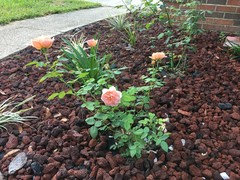

Lichfield angel from HR planted this summer:

Heritage second season:

Sharifa asma from HR planted a month ago:
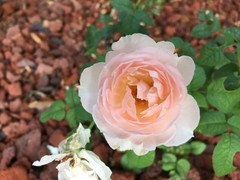
Im still waiting for Teasing Georgia and Alnwick to bloom (they have buds though!).
evelyn, Eden, Jude the Obscure look like they just want to grow canes and leaves this fall, but their either 1st year and Eden is 2 y/o so I'm not worried.
I did break down and fertilize this this weekend since they all looked so sad. Each got a cup of down to earth rose and flower feed. Fighting black spot and having to water since no rain in a couple weeks.strawchicago z5
7 years agolast modified: 7 years agoFily: Thank you for those healthy bush-shots of own-root Austin roses. Carding Mill is known to like hot & dry climate, and your Carding Mill has the best color ever !! Climbers take a while to get established.
Evelyn requires more alkaline calcium than average. Every fall and spring I give Evelyn lime, despite my soil pH over 7.5. Evelyn doesn't like gypsum, it's too acidic. Evelyn is the largest bloom in below bouquet (Carding Mill is behind it). The larger the bloom & more petals, the more calcium and potassium it needs.
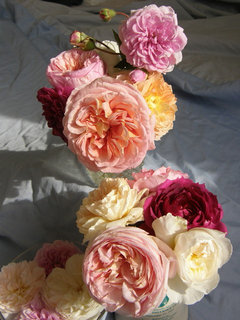
Your roses look healthy & clean with red-lava-rock & LOTS OF BLOOMS !! Red-lava-rock breaks down to "red-clayish" so it's excellent for sandy soil. Its porosity helps to retain water & longer-lasting than wood-chips.You are the first one to post bush-shot Heritage and Lichfield angel. THANK YOU. Very useful to know the bush-shape before buying a rose, and I wish more HMF folks do the same.
In 2015 I tested Dr. Earth NPK 3-9-4 for flowers with high phosphorus .. that didn't work for my alkaline clay (bone meal doesn't work at pH above 7). It did increase flowering but burnt a few of my roses, my clay retains salt well. Last week I moved my Carding mill from a wet spot to a drier spot. That almost got killed this past zone 5a winter when it's freezing rain Dec.
Zone 5a winter is hard on roses, the rose park's Carding Mill didn't make it. One late fall I saw the BEST Frederic Mistrals ever at Cantigny rose park .. so big & healthy, at least 20 blooms per bush .. then it died that winter !!
My Carding Mill is still alive, but it's no-where as robust as when it's 1st-year own-root in summer 2015, fertilized with alfalfa pellets NPK 3-1-2 so it's stingy:

Below is Carding Mill fall 2015, note the alfalfa straw & some blackspots. When I moved it, I dug down to 2.5 feet and found a HUGE rock, that was the cause for blackspots.
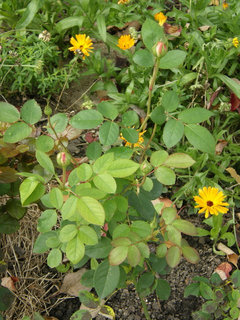
Below is cluster blooming on W.S. last fall 2015 with Dr. Earth Flower girl with NPK 3-9-4 (bone meal, chicken manure, kelp, and sewage sludge). The cluster blooming wasn't worth my bush got burnt from the salty kelp & high phosphorus granular.

strawchicago z5
7 years agolast modified: 7 years agoSharifa Asma is really wimpy on me. I should had gotten it as grafted.

filly_z8bFL
Original Author7 years agoStraw-
I'm glad your carding mill made it! I love the color of this plant! It looks like it's making a comeback!
lichfield Angel will hopefully get fuller next season. It's kinda spindly now. I see a lot of images of this bush from Europe or Russia and it's full and round. I hope mine gets that way.
Heritage is actually 3 planted in a 20" triangle. It's losing a ton of leaves from bs. I don't spray though. I guess it saves me from cutting them off this winter.
Your WS blooms look so full and heavy! Yes I too would sacrifice blooms for a full plant.
My sharifa is next to those three since they are very similar and I thought it'd look good like it was a shorter midget version of heritage lol. It's bs just as bad but it gets even less sun than them. I will see how it does next spring and see if I need to move it to more sun. I think mine is on the wimpy side too. So I'm surprised it wanted to bloom being in the ground about a monthfilly_z8bFL
Original Author7 years agoTemps here are really nice now. High 82 and low 54. It's been DRY lately. Been watering every other day and the roses love this. Wish I had rain or a rain barrel though since using the hose is city water
Alnwick bloomed for me finally:


Bought this as a band from HR this year. It's half the size of my gallons already. Cute little blooms that look good from start to finish. They smell good too! Raspberry scent! I removed the buds the first couple months so the roots could grow but it wanted to bloom by producing buds in flushes.
strawchicago z5
7 years agoFily: That's the best looking blooms of Alnwick .. such deep pink. And your bush is healthy too. Your pics. convince me to stick with own-roots. Grafted on Dr.Huey is tall and gangly. My own-root Pink Peace is 1/2 the height of grafted Pink Peace.
But Grafted is nice when I want to stand up to sniff the blooms, rather than crawl on the ground. So I buy grafted when it's cheap, like $10 per potted-gallon at local store.
filly_z8bFL thanked strawchicago z5Vaporvac Z6-OhioRiverValley
7 years agoThanks for the update. Do you think that the aeration adds a great deal over just soaking? My friend wants to do horse manure tea, but I don't know how that would differ. I'm just putting it into my compost until I can research it.
Straw, I'm doing the same with grafteds, although I have appreciated the quick growth of my grafted Cl. Viking Queen. I planted her grafts deep, so she may go OR over time. My Munstead Wood is also grafted as that's all that was available at the time, and I had read it does better grafted in my general area. I've had at least 5 flushes this season, which is pretty impressive for a 1st year plant. It's sort of skewed my expectations, however! All my Austins and Sugar Moon are grafted as I got them very cheap at Lowe's and HD. The rest are OR.
strawchicago z5
7 years agolast modified: 7 years agoVaporvac: read the recent thread on fresh-chicken-manure. All of these debate on aeration: read through the last info. I gave in Khalid's thread of compost & compost tea on the process of making yogurt filled with beneficial bacteria: it's covered, and left in a warm place for less than one day. The longer you leave it soaking in a warm & wet place, the more acidic it becomes.
Thus the length of time it's soaked in water that counts, rather than with air or without air .. folks don't aerate their yogurt, they simply cover it, and LEAVE IT ALONE.
There's oxygen everywhere including inside water. What matters the most is IF IT'S COMPLETELY DECOMPOSED, or still half-decomposed, and is giving off acid.
strawchicago z5
7 years agolast modified: 7 years agoTotoro asked "For those who make any tea, how do you prevent mosquitoes from hatching? or do they not like the liquid or the aeration?"
September 24, 2016 at 3:35AM
strawchicago(zone 5a)
I bought $12 large black plastic garbage can, holds 32-gallon of water, sold at Menards or HomeDepot. These have plastic lids. It's actually faster to water roses from a garbage can, than going around with a garden hose.
I put the garden-hose into the 32-gallon garbage can, it takes less than 1/2 hour to fill that up. Then I throw organic greens: 4 cups of alfalfa pellets soaked for 3 days until it "sour" is enough to bring my pH 9 tap water down to pH 5.6 rain-water. I keep the cover on.
Folks spend endless time arguing on fermentation with oxygen or without oxygen. They should make "kimchi" or "sauerkraut" and see for themselves. When greens are soaked in water, without salt, they sour very fast in a few days. But salt is added to Kimchi or sauerkraut to slow the fermentation process, so it's less sour, plus to tenderize the veggies & produce flavors.
Making yogurt (loaded with the good bacteria): A tiny amount of beneficial bacteria is introduced to the milk medium. COVER IT, and place at "between 110°F and 115°F for 5 to 10 hours, depending on the desired flavor and consistency—longer incubation periods produces thicker, more tart yogurt. Do not disturb the yogurt during incubation."
http://www.epicurious.com/recipes/food/views/homemade-yogurt-395111
People don't waste time bubbling "air" or stirring yogurt constantly to "feed" oxygen to the probiotics in yogurt.
I took microbiology in college, and the decay-process is stinky, regardless of with oxygen or without oxygen. There's oxygen inside water, and inside the garbage can. Plus the greens float to the top, where there's plenty of oxygen. See excerpt from link below: http://water.usgs.gov/edu/dissolvedoxygen.html
"Dissolved oxygen in surface water is used by all forms of aquatic life; therefore, this constituent typically is measured to assess the "health" of lakes and streams. Oxygen enters a stream from the atmosphere."
Less oxygen if you fill it to the max like with Kimchi, plus submerge a stone inside Kimchi to prevent green-mold from forming by keeping the veggies under salty water. But we don't soak "aflafa" tea long enough to the point of green-mold forming.
The coop-poop chicken manure I bought stated on their bag that it's Aerobically-composted, it's just a fancy word for "open air" so the odor can air out. The horse stable don't waste their time turning the manure pile (20 feet tall). It's simply open air. The odor is suppressed by shell lime.
With mint, basil, or lemon balm they "sour" faster. I soak for 2 days maximum, with the plastic-cover on. It takes less than 15 minutes to dip a 5-gallon bucket to get water, and dump it on many rose-bushes. Watering roses from a 32-garbage can is faster than placing garden-hose on each rose bush. Plus it's good exercise to carry 5-gallon bucket around the garden.
filly_z8bFL
Original Author7 years agoVaporvac- I'm not sure about aeration better or not. Lots of websites say to aerate compost tea with a little blackstrap molasses so the beneficial bacteria don't die and have something to eat while it "brews". Maybe the oxygen keeps it from going acid too fast so the bacteria and stuff can permeate the water? Also another poster on here aerated his tea so I followed what he did. I agree with straw though about fermentation being faster without oxygen. Alfalfa tea I made earlier this year before I got the air pump soured fast!
Compost tea bacteria are said to fight off pests and diseases better than chemicals so that's what I'm trying to do with my roses. I also agree with straw, Khalid, and others here that roses will be most healthy if given balanced nutrients that their cells are made of. It's amazing that deficiencies in certain elements will leave your plants open to more pests and disease than if given the wrong balance of fertilizers. I stopped spraying my roses with neem and rose spray from bonide because I want bees, ladybugs and butterflies in my garden and that stuff is indiscriminate against all bugs. As long as the plants aren't sick (easy targets for aphids and thrips) then they mostly leave my plants alone and the bees and other beneficial critters take care of the rest. I have a ton of frogs and even saw a baby snake too. Not really liking the snake though since it looked like a cottonmouth (poisonous). I'm not as experienced as straw so I'd take any info she has!strawchicago z5
7 years agolast modified: 7 years agoFily: Products-promoter (air-pump) confuse the issue just to brainwash consumers into buying stuff for compost tea. Below link explains well:
http://www.dummies.com/home-garden/green-living/aerobic-versus-anaerobic-composting/
"As long as plenty of air is available, aerobic decomposers work faster and more efficiently than their anaerobic counterparts. However, as organisms deplete the supply of oxygen from the existing spaces and pores between bits of organic matter, the decomposition process slows. Aboveground aerobic decomposers can generate heat as a byproduct of their activity ... when conditions are to the decomposers’ liking, temperatures in your pile heat up sufficiently to kill weed seeds and pathogens.
To keep your decomposers working at maximum speed, you may want to incorporate some type of aeration aid during your initial pile construction: Stir organic matter regularly: Use a pitchfork or an aerating tool to stir things up.
Anaerobic organisms work without oxygen, so most anaerobic takes place underground in pits or trenches. Basically, you dig a hole, fill it with organic matter, and seal it with a layer of soil.
Anaerobic organisms work at slower rates than their aerobic counterparts .. Anaerobic organisms exude smelly gas as a byproduct of their exertions. And because of the colder conditions, weed seeds and plant pathogens aren’t destroyed."
*** Does that apply to a wet compost tea? No, it doesn't, because there's plenty of oxygen in water. Plus moisture helps to speed up the decomposition process. "wet food" like chicken-broth or meat have to be VACUUM-SEALED to stop microbes.
There's plenty of oxygen in compost tea, even if you put a lid on. The aeration-pump introduces more oxygen to speed up the decomposition. In contrast, folks put a bowl to submerge kimchi UNDER salty water, to prevent it being exposed to air to grow greenish mold.
Vaporvac put leaves in plastic bag, plus some soil and water for leaves to decompose faster. The soil is for microbes, and the water is to keep the microbes alive. Same with my leaving brown-yard-waste bags with grass-clippings, fold-shut, in the rain. I want it moist, but not soaking wet & stinky.
One year I left grass-clippings out in open rain during winter & spring, and it became a wet sewage swamp, with verticullum wilt fungus that killed my tomatoes. In summer time, grass clipping in open air matted and dry up in the heat into "mummified" grass clippings & dry like cardboard.
My neighbor showed me her compost-tumbler. It's a HUGE metallic container with a crank to stir the compost. She opened it, and it's moist and fluffy, zero smell. Composting is faster if you introduce air and moisture.
Khalid asked me a question about his putting gypsum in compost, and the maggots went away. Gypsum is acidic, so it will kill maggots temporary, but its acidity helps to speed-up the decomposition by breaking down fibrous matter. When I dig in my rock hard clay, at 2 feet it's impossible to dig further, I simply put gypsum & some water. A month later, that become fluff. The acid in gypsum corroded even rocks, if there's tons of water.
Damage to root = fungal diseases or losing all leaves. This July I threw some gypsum around Marie Pavie. It dropped 3/4 of its leaves from the acidity that corroded roots when rain hit. In 2012 I threw gypsum on Evelyn, and it broke out in rust instantly when rain hit.
Things rot faster if there's acidic water, such as rain. I killed or stunt countless roses by following Roses Unlimited recipe of 2 cups of alfalfa meal in the planting hole. I did that to Paul Neyron (grafted on Dr. Huey). Knowing that Dr.Huey likes alkaline, I also put 1 cup of lime to balance out 2 cups of alfalfa pellets .. but when rain hit, the afalfa decomposed underground into a sour mess that kill Dr.Huey. Thank God, it's a cheap $3 rose from Menards.
Since my soil is rock-hard clay at pH near 8 at the bottom, I got this clever idea of mixing in cracked corn (pH 4) to break up the soil. I did that to a hole in partial shade, in a soaking wet spot with rain-spout nearby. After 3 months, the clay went from compact to fluffy soil. The corn decomposed fast to neutral pH, given shade and water. Tchaikovsky did great.
Then I mixed corn in the planting hole of a spot up the hill, in full sun. It's dry, so the corn didn't decompose, even after 3 months. I planted Just Joey ($7 bare-root). It died when tons of rain hit. Chicagoland rain pH is around 4.7, corn has pH 4 and when that decompose, the pH drops further.
That's what my neighbor, Ph.D. in botany did: Due to our extreme cold winter, -20 below zero. He dug a large trench, put compost & leaves in, and covered with soil. That decompose faster since it's warmer underground, plus wetter, plus soil microbes help to break down.
Leaves don't break down if they matt together (no air in between), but if I layer leaves with soil (introducing air and microbes and moisture), leaves break down very fast.
CONCLUSION: Compost tea is wet, plenty of oxygen and moisture in the water, thus stirring is not necessary. I once saw a squirrel drowned in the neighbor's garbage can filled with rain-water. That's stinky regardless if you stir it, or don't stir it.
The decay process is faster if you introduce air or moisture. Decaying gives off acid, and things decay faster, or give off more acid, when it's in a wet solution.
User
7 years agolast modified: 7 years agoAnerobic or without oxygen bacteria are the disease causing microbes.
O2 is dissolved Oxygen in Water.
Lots of people use Actively Aerated Compost Tea. Here are six of them.
The motion of the water and air is to get the microbes off from the compost into the water.
Howard Garrett Dr Andrew Weil
Dr Andrew Weil Bob Cannard
Bob Cannard
 Mike McGrath
Mike McGrath Jeff Lowenfels
Jeff Lowenfels
Vaporvac Z6-OhioRiverValley
7 years agoOK! You've convinced me; I'm giving it a go next year! : ) Now I just need to find my old fish tank aerater.
User
7 years agolast modified: 7 years agoI am happy to hear from you Vapor Vac. Thank you.
This is the Organic rose forum. Most Organic Gardeners use Active aerated compost tea.
I was happy to see that Filly had a nice set up for Compost Tea and was looking forward to hearing from Filly .
What do you got to lose? I brick a bucket and some pantyhose.
Lots of Organic Gardeners use Aerated Compost Tea. I listed seven well educated Organic Gardeners that do. I had good luck with it.
User
7 years agolast modified: 7 years agoRoger from Ask this old house is using a strong air pump to Aerate and he uses a sump pump in the rain barrel to spray the leaves and soil.
http://forums.gardenweb.com/discussions/4340578/eric-t-fleisher?n=6
Compost tea TV Ask this Old House https://youtu.be/WlcX2WpnQWI
https://youtu.be/WlcX2WpnQWI

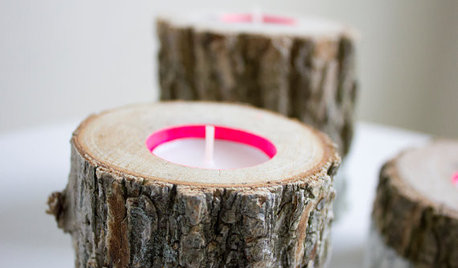

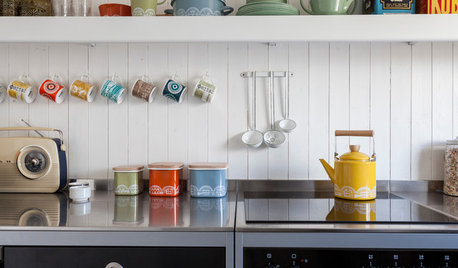




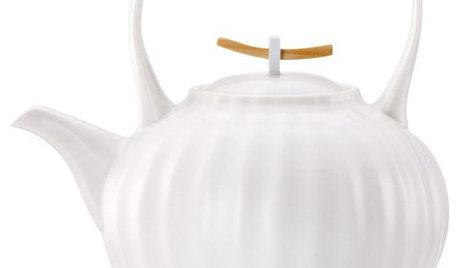




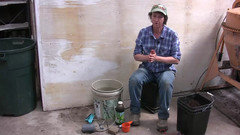



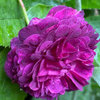
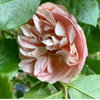
strawchicago z5